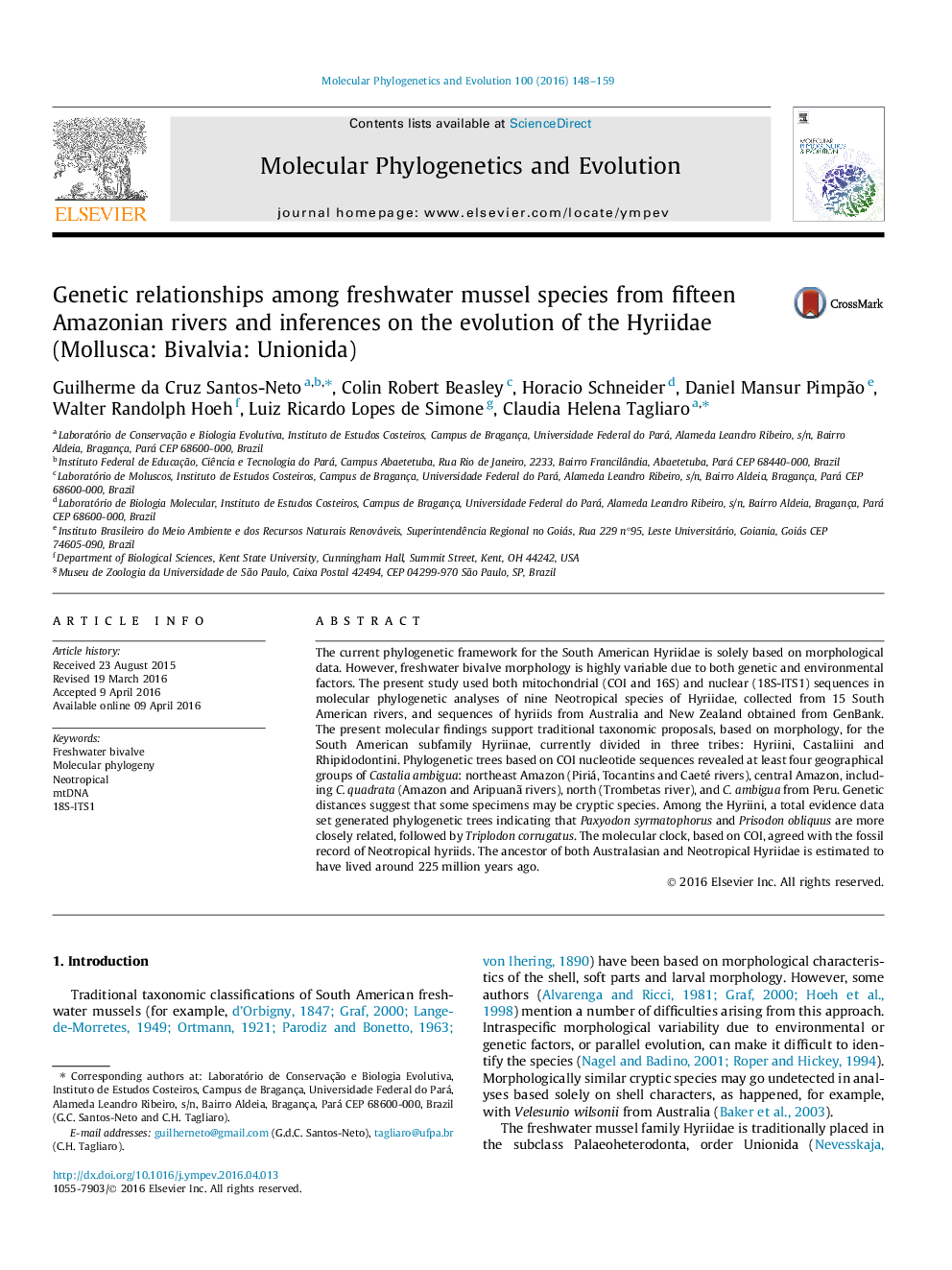| کد مقاله | کد نشریه | سال انتشار | مقاله انگلیسی | نسخه تمام متن |
|---|---|---|---|---|
| 2833659 | 1570797 | 2016 | 12 صفحه PDF | دانلود رایگان |
• Hyriidae from 15 Amazonian rivers were sequenced.
• COI, 16S, 18S-ITS1 and total evidence phylogenetic analyzes were carried out.
• Phylogenetic trees support taxonomic classifications based on morphology.
• The molecular clock (COI) agrees with the fossil record of Neotropical hyriids.
• The ancestor of all Hyriidae probably lived 225 million years ago.
The current phylogenetic framework for the South American Hyriidae is solely based on morphological data. However, freshwater bivalve morphology is highly variable due to both genetic and environmental factors. The present study used both mitochondrial (COI and 16S) and nuclear (18S-ITS1) sequences in molecular phylogenetic analyses of nine Neotropical species of Hyriidae, collected from 15 South American rivers, and sequences of hyriids from Australia and New Zealand obtained from GenBank. The present molecular findings support traditional taxonomic proposals, based on morphology, for the South American subfamily Hyriinae, currently divided in three tribes: Hyriini, Castaliini and Rhipidodontini. Phylogenetic trees based on COI nucleotide sequences revealed at least four geographical groups of Castalia ambigua: northeast Amazon (Piriá, Tocantins and Caeté rivers), central Amazon, including C. quadrata (Amazon and Aripuanã rivers), north (Trombetas river), and C. ambigua from Peru. Genetic distances suggest that some specimens may be cryptic species. Among the Hyriini, a total evidence data set generated phylogenetic trees indicating that Paxyodon syrmatophorus and Prisodon obliquus are more closely related, followed by Triplodon corrugatus. The molecular clock, based on COI, agreed with the fossil record of Neotropical hyriids. The ancestor of both Australasian and Neotropical Hyriidae is estimated to have lived around 225 million years ago.
Figure optionsDownload as PowerPoint slide
Journal: Molecular Phylogenetics and Evolution - Volume 100, July 2016, Pages 148–159
